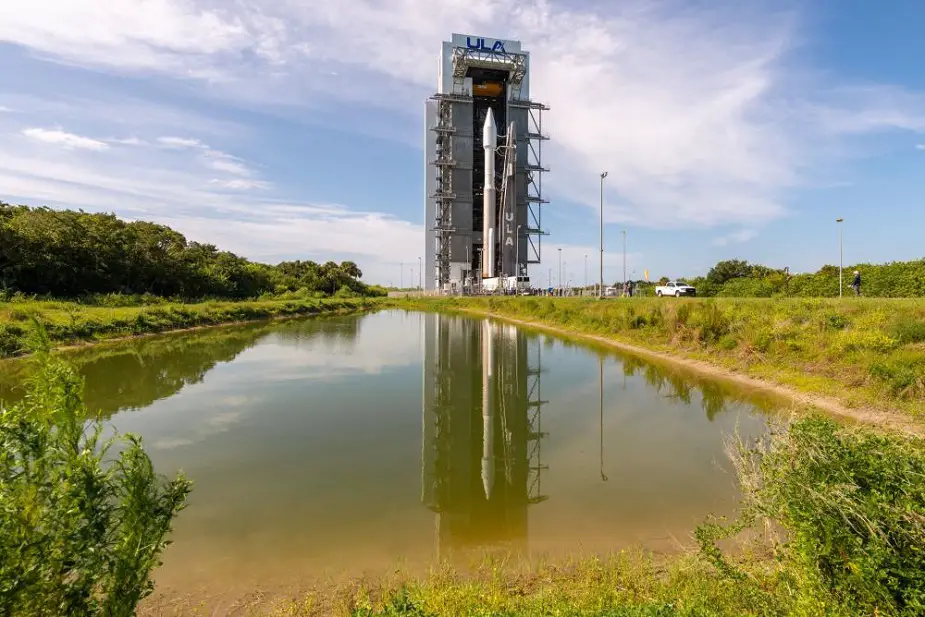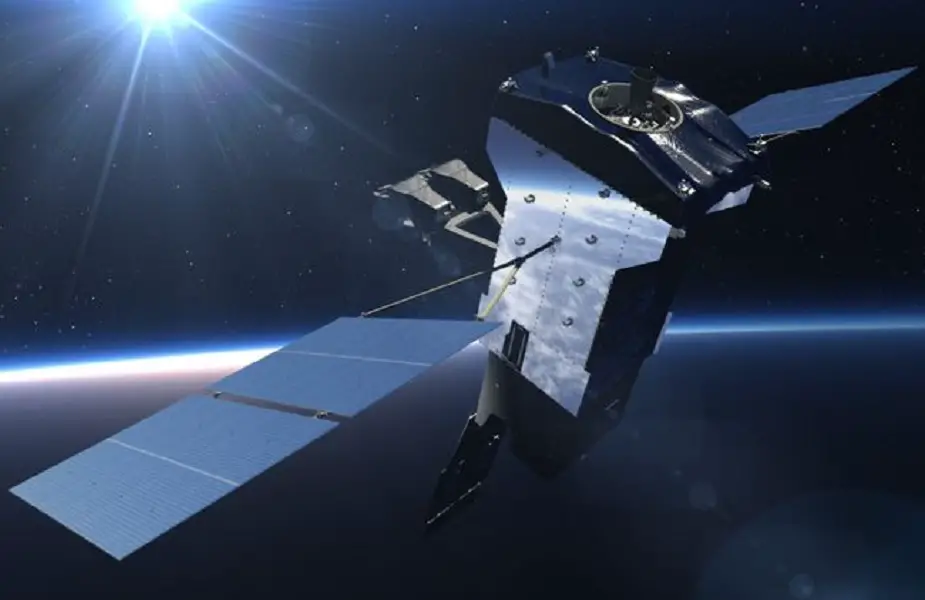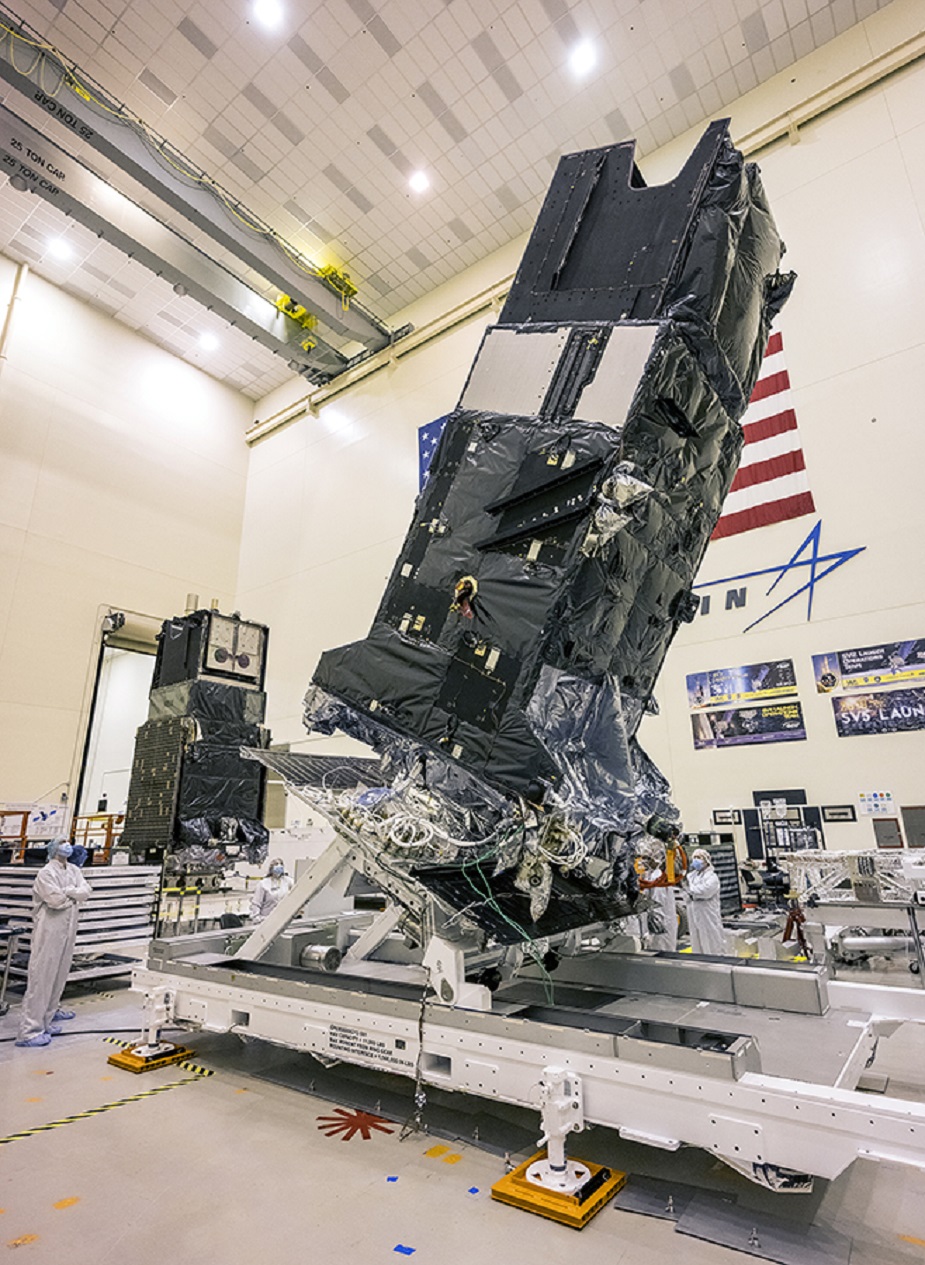Following a successful launch from Cape Canaveral Space Force Station in Florida on August 4, the U.S. Space Force is now communicating with the sixth Space Based Infrared System Geosynchronous Earth Orbit (SBIRS GEO) -6 satellite, built by Lockheed Martin.
Follow Air Recognition on Google News at this link
 A United Launch Alliance Atlas V rocket carrying the U.S. Space Force’s Space Based Infrared System Geosynchronous Earth Orbit 6 missile warning satellite is moved into position at Launch Complex 41 at Cape Canaveral Space Force Station, Fla. (Picture source: US Space Force)
A United Launch Alliance Atlas V rocket carrying the U.S. Space Force’s Space Based Infrared System Geosynchronous Earth Orbit 6 missile warning satellite is moved into position at Launch Complex 41 at Cape Canaveral Space Force Station, Fla. (Picture source: US Space Force)
The final satellite in the SBIRS program series, GEO-6 joins the U.S. Space Force's constellation of missile warning satellites equipped with powerful scanning and staring infrared surveillance sensors.
"The need for Overhead Persistent Infrared systems has never been more critical," said Michael Corriea, vice president of Lockheed Martin Space's Overhead Persistent Infrared (OPIR) Mission Area. "At Lockheed Martin, we are making advancements to keep pace with evolving needs based on emerging threats in our military customers' environment, helping pave the way for the future."
The integrated SBIRS satellite system is an example of that innovative thinking and leveraging of talent. The satellite was produced by Lockheed Martin in coordination with representatives from the Space Force and Department of Defense.
It provides long-range surveillance and target detection capabilities to support missions such as missile warning, missile defense, technical intelligence, battlespace awareness, as well as infrared information for multiple missions simultaneously, according to a 2016 Air Force Technology report.
The infrared payload consists of two sensors: a scanner and a step-starer. The scanning sensor continuously scans the Earth to provide 24/7 global strategic missile warning capability. Data from the scanner contributes to theater and intelligence missions, according to the Space Force’s SBIRS factsheet.
The step-staring sensor provides coverage for theater missions and intelligence areas of interest with its fast revisit rates and high sensitivity. The sensors gather raw, unprocessed data that are downlinked to the ground, “so the same radiometric scene observed in space will be available on the ground for processing,” the factsheet stated. The sensors also perform signal processing and transmit detected events.
The constellation, which orbits the Earth from 22,236 miles above the equator, serves as a deterrent for America’s enemies.
 The integrated SBIRS satellite system is an example of that innovative thinking and leveraging of talent. The satellite was produced by Lockheed Martin in coordination with representatives from the Space Force and Department of Defense (Picture source: Lockheed Martin)
The integrated SBIRS satellite system is an example of that innovative thinking and leveraging of talent. The satellite was produced by Lockheed Martin in coordination with representatives from the Space Force and Department of Defense (Picture source: Lockheed Martin)
“We need to know if an adversary launches a weapon toward us or one of our allies, especially if it’s a nuclear weapon, and this satellite system supports that capability and enables us to better protect the United States and our allies,” said U.S. Air Force Tech. Sgt. Jason Kimmel, 5th Space Launch Squadron mission assurance technician from Everett, Washington. “I am very proud to support this mission.”
The GEO-6 satellite is a stepping stone toward the resilient missile warning to be provided by SBIRS' successor, the Next Generation OPIR GEO System (NGG). Like SBIRS GEO-5 and GEO-6, NGG will be based on Lockheed Martin's modernized LM 2100 Combat Bus, which provides additional capabilities such as cyber hardening, resiliency features, enhanced spacecraft power, and improved propulsion and electronics.
The SBIRS GEO-6 satellite is responding to the U.S. Space Force's commands as planned. Signal acquisition was confirmed 3 hours and 43 minutes after the satellite's 6:29 a.m. EDT lift off aboard a United Launch Alliance (ULA) Atlas V rocket. The satellite is now orbiting under its own propulsion following separation from the rocket. The onboard sensors collect data that allow the U.S. military to detect missile launches, support ballistic missile defense, expand technical intelligence gathering and bolstering situational awareness on the battlefield.
The OPIR mission has become more critical as ballistic missile technology has proliferated around the world with over 1,000 missile launches tracked annually. Lockheed Martin recognizes that modernized technology is needed to augment the current missile warning architecture and improve resiliency against attacks.
"SBIRS GEO-6 fortifies the current missile warning architecture, and it also signifies that we are on our way to achieving even greater technological capacity and expanded coverage with NGG," Corriea said.
 The U.S. Space Force's SBIRS GEO-6 early missile warning satellite built by Lockheed Martin (Picture source: Lockheed Martin)
The U.S. Space Force's SBIRS GEO-6 early missile warning satellite built by Lockheed Martin (Picture source: Lockheed Martin)
















